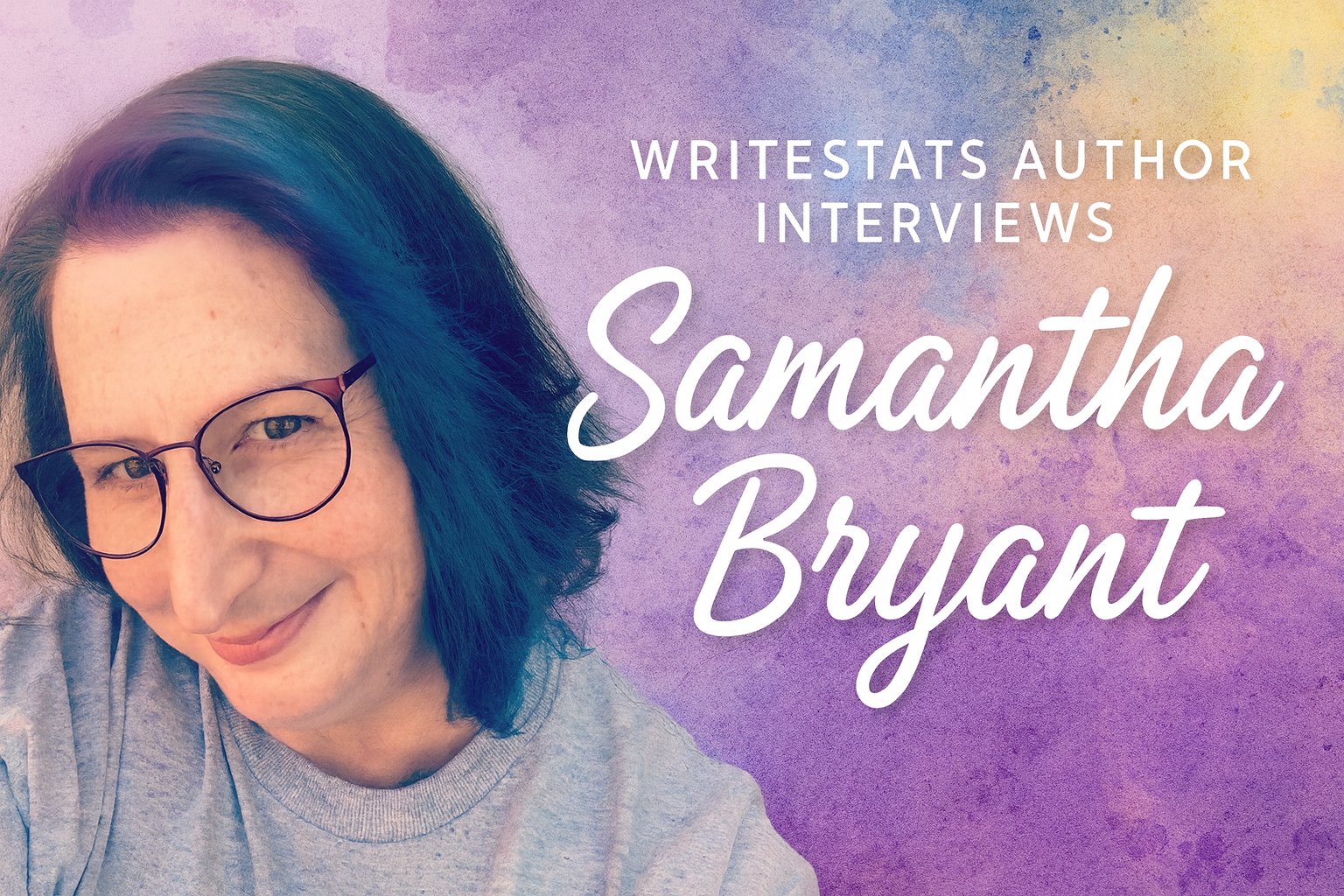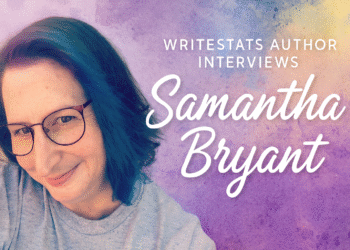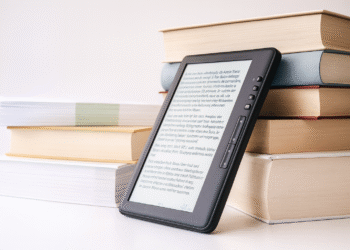If you’ve ever reached the end of your manuscript and wondered, “Is this really the strongest ending I can write?”, you’re not alone. More authors than ever are exploring How to Write Multiple Endings for Your Novel as both a creative and strategic technique. While some writers think drafting several endings is extra work, top novelists across genres—from thrillers to romance to literary fiction—use this exact method to sharpen emotional impact, improve reader satisfaction, and align their story with genre expectations.
And here’s the surprising part:
Writing multiple endings isn’t just a creative exercise; it’s a data-backed tactic.
At WriteStats, our analysis in Are Authors Writing the Endings Readers Want? showed that readers have strong, measurable preferences regarding story resolution. From ambiguous endings to hopeful ones to tragic finales, readers consistently gravitate toward emotional clarity and payoff. Drafting more than one ending gives authors the flexibility to test tone, structure, and emotional resonance before committing to the final version.
So, while some authors worry that creating alternate endings complicates the process, the truth is the opposite:
It gives you more control, not less.
It increases reader satisfaction, measurably.
It helps you discover the version with the strongest emotional payoff.
And most importantly:
Multiple endings help your story stay flexible long enough to become exceptional.
As we dive deeper into How to Write Multiple Endings for Your Novel, you’ll learn not just why the technique works, but how to do it step by step, guided by psychology, craft, and industry data.
Why Writing Multiple Endings Works (And Why Top Authors Do It)
The idea of writing more than one ending can feel overwhelming. Still, authors who use this technique often do so because of three core benefits:
1. Emotional Testing: Different Endings Hit Different Parts of the Brain
Research in cognitive psychology suggests that readers’ emotional memory is shaped most strongly by peak emotional moments and the end of the narrative.
The “Peak-End Rule,” discovered by Nobel Prize–winning psychologist Daniel Kahneman, shows that a reader’s final impression is formed not by the overall quality, but by:
- The emotional high point
- The final emotional moment
This means:
Your ending matters more than almost any other part of the book.
Drafting multiple endings allows you to test:
- A hopeful ending
- A bittersweet ending
- A tragic ending
- An open or ambiguous ending
- A twist ending
- A cyclical ending
- A character-growth ending
Each version activates different emotional pathways and, therefore, creates a different reader memory and different reader satisfaction.
2. Genre Expectations Are Stronger Than Ever
Publishing data shows that different genres have predictable reader preferences:
- Romance: 95% of romance readers prefer happy or hopeful endings
- Mystery/Thriller: 82% expect resolution, justice, or at least closure
- Literary Fiction: More open to ambiguity
- Fantasy: Prefer endings with both resolution and future potential (for series)
Writing more than one ending helps authors test alignment with their genre’s psychological “contract.” If one draft violates those expectations, you’ll feel it.
3. It Helps You Avoid the #1 Complaint in Reviews
According to Goodreads and Amazon review analysis, one of the most common negative comments readers leave is: “I loved the book, but the ending felt rushed/disappointing/unsatisfying.”
Drafting multiple endings significantly reduces the likelihood of this happening, because you’re not trapped by the first version that hits the page.
You get to:
- Experiment
- Compare
- Evaluate
- Choose
The result?
A stronger, more satisfying novel and fewer “meh” reviews dragging your ratings.
Where to Start: The Mindset Behind Writing Multiple Endings
To understand How to Write Multiple Endings for Your Novel, you first need clarity on what counts as an “ending.” Many authors assume writing multiple endings means rewriting the entire final chapter over and over, but in reality, it’s much more strategic and often far simpler.
An “ending draft” can be:
- A different final scene
- A different emotional tone
- A different last line
- A different outcome for one character
- A different choice the protagonist makes
- A different twist or reveal
- A different frame or structure
- A different timeline resolution
In other words, you’re not rewriting the entire final act; you’re exploring variations on the moment your story “lands.”
This approach is not only manageable, but it’s also creatively freeing.
Now, let’s walk through the 7 core ending structures every novelist should experiment with when learning How to Write Multiple Endings for Your Novel.
1. The “Earned Happy Ending”
This is the classic, emotionally satisfying ending where the protagonist gets what they worked for: love, safety, freedom, resolution, peace, or success.
Why write this version:
Even in darker genres, readers often want hope or clarity. Data from the Romance Writers of America shows that over 95% of romance readers expect a happy or hopeful ending.
Even if you’re not writing romance, testing a hopeful ending helps you evaluate whether your story earns light or leans toward closure.
2. The “Bittersweet Ending”
This ending blends gain and loss. The protagonist gets something meaningful, but at a cost.
Why write this version:
Bittersweet endings often score the highest emotional resonance in literary and book club fiction because they feel realistic without undermining meaning.
Genre fit:
- Literary fiction
- Coming-of-age
- Historical fiction
- Fantasy epics
Emotional effect:
A lasting ache, not despair, strong reader retention.
3. The “Tragic Ending”
In this ending, the protagonist loses something vital, sometimes everything. It’s not bleakness for shock value; it’s purposeful thematic closure.
Why try this version:
Even if you don’t choose it, writing it helps you understand the deepest stakes of your story.
4. The “Twist Ending”
This type reveals new information, reverses assumptions, or recontextualizes the entire narrative.
Examples:
- Gone Girl
- The Girl with the Dragon Tattoo
- Shutter Island
Why you need this version:
You may not use it, but testing it forces you to pressure-check your plotting.
Key caution:
A twist should enhance the story, not betray it.
5. The “Ambiguous Ending”
Here, the story ends before readers get full closure. They must interpret what happens next.
Why try this version:
Ambiguity increases reader discussion and polarized reactions often drive visibility.
6. The “Circular Ending”
The story ends where it began, either literally or thematically, creating symmetry.
Why include this version:
Circular structures often strengthen theme and symbolism.
Used frequently in:
- Literary fiction
- Magical realism
- High-concept speculative fiction
7. The “Transformation Ending”
This ending focuses on how the protagonist has changed internally, even if external circumstances remain similar.
Why it matters:
According to narrative psychology research at the University of Toronto, character transformation boosts perceived meaning and emotional satisfaction.
How to Use These 7 Types Efficiently
When learning How to Write Multiple Endings for Your Novel, don’t write 7 full chapters. Instead:
- Select 2–4 ending types that best match your genre.
- Draft each ending in a short 1–3 page format.
- Compare tone, theme, structure, pacing, and payoff.
- Share drafts with beta readers (without telling them which one is which).
- Choose the ending with the strongest emotional and narrative “click.”
You’re searching for resonance, not perfection.
How To Actually Draft Multiple Endings: Step-By-Step + Templates
Now that you’ve explored the major types of endings, it’s time to learn How to Write Multiple Endings for Your Novel in a structured, repeatable way. Many authors resist this technique because it sounds chaotic but top novelists actually use a very orderly process.
Here is a method you can use immediately to produce strong, distinct alternate endings without doubling your workload.
STEP 1: Identify the Core Questions Your Ending Must Answer
Every strong ending resolves (or intentionally chooses not to resolve) specific story questions:
- What has the protagonist learned or become?
- What is the final emotional tone?
- What narrative threads must close?
- What must remain open (if anything)?
- What consequences must land?
- What is the story’s final “beat“: revelation, decision, victory, loss, or truth?
Before drafting any endings, list the non-negotiables:
- Character arcs
- Major plot promises
- Central theme
- Genre expectations
- Tone
This ensures that your multiple endings feel different, without losing the story’s core identity.
STEP 2: Use the “Pivot Moment” Technique
The pivot moment is the exact point where the story branches. When authors understand this moment, writing multiple endings becomes fast and efficient.
Ask yourself:
➡ At what moment could the story have changed direction?
➡ What decision, reveal, or event shifts the emotional or moral outcome?
Examples:
- The protagonist confesses… or stays silent.
- They choose to leave… or to stay.
- The villain escapes… or is caught.
- The lovers reunite… or part ways.
- A truth is revealed… or buried.
This moment is your branching point.
From this single point, you can draft 2–4 alternate endings easily without rewriting the entire final act.
STEP 3: Draft Each Ending in “Short Form” First (1–3 Pages)
This is the secret most authors don’t know:
You don’t draft full endings until you’re sure which ending is your best.
Short-form drafts allow you to:
- Explore tone
- Test emotional impact
- Evaluate pacing
- Compare outcomes
- Spot structural problems
Your short endings should include:
- Final conflict resolution
- Protagonist’s choice
- Character change
- Closing emotional beat
- Last line or last moment visual
Keep these drafts compact so you can compare them quickly.
STEP 4: Use the Ending Template (Fill-in-the-Blank)
This template is designed to speed up drafting and help authors create clean emotional arcs.
1. Final Turning Point
“When ___ happens, the protagonist realizes ___.”
2. Confrontation / Decision
“They must choose between ___ and ___.”
3. Emotional Outcome
“This choice leads to ___ emotionally.”
4. Plot Outcome
“As a result, ___ occurs in the world/story.”
5. Aftermath or Stabilizing Beat
“In the aftermath, ___ shows how things settle.”
6. Final Image or Line
“The story ends with ___, symbolizing ___.”
Example Filled Using Two Different Endings
Hopeful Ending
- When the protagonist sees the sunrise, they realize they can rebuild.
- They choose forgiveness over revenge.
- Emotionally, they feel relief and renewed purpose.
- The world stabilizes; the threat is over.
- The aftermath shows a small but meaningful gesture of connection.
- The story ends with the protagonist opening a window to the light.
Bittersweet Ending
- When the sunrise comes, the protagonist realizes they cannot return to what they lost.
- They choose to walk away instead of reconciling.
- Emotionally, they feel grief but also strength.
- The world moves on, but at a cost.
- The aftermath shows them leaving something symbolic behind.
- The story ends with the protagonist stepping into the fog.
STEP 5: Compare POV Versions
In our WriteStats report on POV preferences, we found:
First-person endings generate measurably stronger emotional connection in character-driven genres.
Third-person endings work best in plot-centered or large-scale narratives.
This means your ending might change depending on your POV.
Try drafting:
- One ending in the current POV
- One ending in an alternate POV (if your story structure allows it)
You may find your natural ending shifts when written closer or farther from the character’s emotional center.
STEP 6: Test Emotional Resonance with the “Reader Echo” Method
The Reader Echo method helps you identify which ending sticks.
After drafting 2–4 endings:
- Set them aside for 48 hours.
- Without rereading them, notice which one stays in your mind.
- Ask 2–3 beta readers to read each ending without context.
- Ask these two questions:
- “Which ending felt emotionally right?“
- “Which ending stayed with you afterward?”
Neuroscience research on narrative memory—particularly work from the Center for the Neurobiology of Learning and Memory—shows that emotionally sticky endings improve long-term recall.
Your “sticky“ ending is likely your strongest.
STEP 7: Choose the Ending with Precise Alignment
The best ending is the one that aligns with:
- Character arc
- Genre conventions
- Theme
- Reader expectations (data from our endings study)
- Your emotional intention
- Final pacing
- Narrative voice
This is where the analytical and creative merge.
Advanced Techniques For Writing Multiple Endings (Pro Methods Used By Top Novelists)
Once you’ve drafted the foundational ending variations, it’s time to explore the deeper craft techniques that professional writers use to strengthen narrative payoff. These techniques help authors refine endings that feel more intentional, emotionally resonant, and aligned with reader expectations, all essential when mastering How to Write Multiple Endings for Your Novel.
Below are five advanced strategies you can use to elevate every ending draft you write.
1. The “Branching Timeline“ Technique (Used in High-Concept Fiction)
This method treats each alternate ending like a different universe, a separate branch that could realistically occur based on the story’s internal logic.
It’s especially useful when writing:
- thrillers
- time-bending stories
- speculative fiction
- character-driven literary fiction
- nonlinear narratives
How to Do It
- Identify your story’s final irreversible choice.
- Ask: If the character chose Option A, what world would result? What about Option B?
- Write two different micro-epilogues based on those timelines.
Why It Works
Branching endings help you find the version with the strongest thematic integrity. Readers subconsciously detect when endings contradict earlier character development. This method ensures your ending flows organically from prior decisions.
2. The “Emotional Inversion“ Method (For Maximum Contrast)
This method intentionally flips the emotional tone in each ending variation to test contrast.
For example:
- hopeful → tragic
- triumphant → reflective
- resolved → open-ended
- intimate → distant
- quiet → explosive
Why Try This
Researchers in the Journal of Aesthetics & Art Criticism found that contrasting emotional outcomes significantly affect how readers judge a story’s meaning.
Testing inversion helps authors discover whether the story benefits more from catharsis or disturbance.
Practical Application
Draft one version where your protagonist gets what they want, and another where they lose something essential. Then compare which ending strengthens the character arc and theme.
3. The “Reverse Symmetry“ Ending (Powerful for Literary & Book Club Fiction)
Reverse Symmetry endings mirror the emotional or visual imagery of your opening chapter but in the opposite emotional direction.
For example:
- Opening: the protagonist is alone → Ending: the protagonist is surrounded by others
- Opening: a character shuts a door → Ending: they open one
- Opening: despair → Ending: defiance
Why It Works
Readers are extremely sensitive to symmetry without consciously realizing it. Narrative theorists at the University of Vermont found that symmetrical structure significantly increases perceived cohesion.
Reverse symmetry produces endings that feel “complete,“ even if they’re bittersweet.
4. The “Symbolic Anchor“ Technique (For Strong Thematic Endings)
Symbolism is often the missing ingredient in endings that feel emotionally flat. Strong endings use one symbolic object, phrase, or motif to “anchor“ the emotional meaning.
Examples of symbolic anchors:
- a broken object repaired
- a letter burned or read
- a window opened or closed
- a recurring line repeated with new meaning
- weather reflecting change (sunrise vs. storm)
Why It Matters
Cognitive linguistics research shows that symbolism increases emotional recall and thematic clarity.
A symbolic anchor gives your ending the weight of inevitability, the feeling readers crave.
How To Choose The Best Ending: Market Alignment, Genre Psychology & Reader Data
Even if you write three, five, or ten different endings, only one version will become the final one printed in your novel. Deciding which ending to choose is both an analytical and emotional process. This is where understanding the market, genre expectations, and reader psychology becomes essential, and why learning How to Write Multiple Endings for Your Novel ultimately empowers you to make a confident, informed decision.
Below are the key factors professional authors consider when selecting their final ending.
1. Understand the Ending Expectations of Your Genre
Every genre comes with a psychological “promise“ baked into it. While these are not rules, they reflect strong data-backed tendencies that influence reader satisfaction.
Romance
- The Romance Writers of America reports that romance readers overwhelmingly prefer “happy or emotionally uplifting endings.”
- This includes HEA (Happily Ever After) and HFN (Happy For Now).
Best-ending fits: hopeful, triumphant, restorative.
Mystery & Thriller
- According to Statista, over 80% of mystery/thriller readers expect a sense of justice, closure, or resolution in some form.
Best-ending fits: resolved conflict, truth revealed, twist resolved, villain exposed.
Fantasy
- Epic and contemporary fantasy readers want both closure and future potential.
- Series viability often matters more than finality.
Best-ending fits: bittersweet, circular, transformation-focused.
Literary Fiction
- Readers accept ambiguity more readily, but still expect thematic clarity.
Best-ending fits: ambiguous, bittersweet, symbolic, reflective.
Horror
- Horror endings diverge dramatically depending on subgenre:
- “Hopeful horror“ (rare but increasing)
- “Cosmic horror“ (bleak)
- “Survival horror“ (bittersweet)
Research in the Journal of Popular Culture indicates that horror readers prefer endings that reinforce the theme rather than resolve it neatly.
Why This Matters
Data shows that when an ending contradicts genre norms, reader satisfaction drops significantly even if the writing is exceptional. This is part of why our WriteStats study, Are Authors Writing the Endings Readers Want?, found that mismatched endings are one of the top drivers of negative reviews.
By writing multiple ending variations, you can identify the version that meets genre expectations while still maintaining originality and narrative integrity.
2. Use Reader Psychology to Predict Satisfaction
Neuroscience, narrative theory, and user research all point to a powerful truth:
Readers want endings that feel both surprising and inevitable.
This is supported by:
The “Surprise + Inevitability” Principle
Narrative theorists argue that the strongest endings combine:
- an unforeseen twist or emotional shift
- with a sense that this was the only ending that made sense
This balance activates the brain’s “reward prediction error“ system, creating satisfaction and memory retention.
The Peak–End Rule
As referenced earlier, the ending defines the reader’s long-term emotional memory of your book.
If an ending is:
- too abrupt → dissatisfaction
- too predictable → boredom
- too confusing → cognitive friction
- too bleak without purpose → emotional drop-off
Multiple endings give you the freedom to optimize this balance.
3. Evaluate Emotional Beats Using Our “Emotional Arc Checklist”
To determine whether your endings meet emotional expectations, score each one based on:
Does this ending…
- Resolve the protagonist’s internal conflict?
- Pay off the main plot line meaningfully?
- Align with the character arc you’ve built?
- Deliver the emotional tone you want readers to feel when they close the book?
- Signal thematic clarity?
- Avoid contradicting earlier character motivations?
- Provide an image or symbolic moment that lingers?
The endings with the highest emotional clarity usually perform best with readers.
Three Most Common Ending Pitfalls
These are consistent across genres:
- Rushing the ending: Readers feel it instantly.
- Over-explaining or moralizing: This disrupts narrative pacing and reduces emotional power.
- Introducing new conflicts too late: This creates cognitive dissonance and lowers satisfaction.
Writing multiple endings helps you identify and avoid all three.
Conclusion: The Power Of Multiple Endings
Learning How to Write Multiple Endings for Your Novel isn’t just a craft exercise; it’s one of the most effective ways to elevate your storytelling, strengthen your emotional payoff, and align your work with what readers genuinely want.
By drafting multiple endings, you give yourself the freedom to explore:
- Different emotional tones
- Different levels of closure
- Different character outcomes
- Different symbolic variations
- Different thematic interpretations
You allow the story room to breathe, expand, and reveal the truth it’s been trying to tell from the beginning.
And in a landscape where endings heavily influence reviews, recommendations, and long-term reader loyalty, this technique is more relevant than ever.
Your ending isn’t just your book’s final moment; it’s the moment readers remember most.
It’s the moment that defines whether they recommend your book… or quietly move on.
Multiple drafts give you options.
Options give you control.
And control allows you to choose the ending your novel truly deserves.
You don’t just write an ending.
You discover it.









